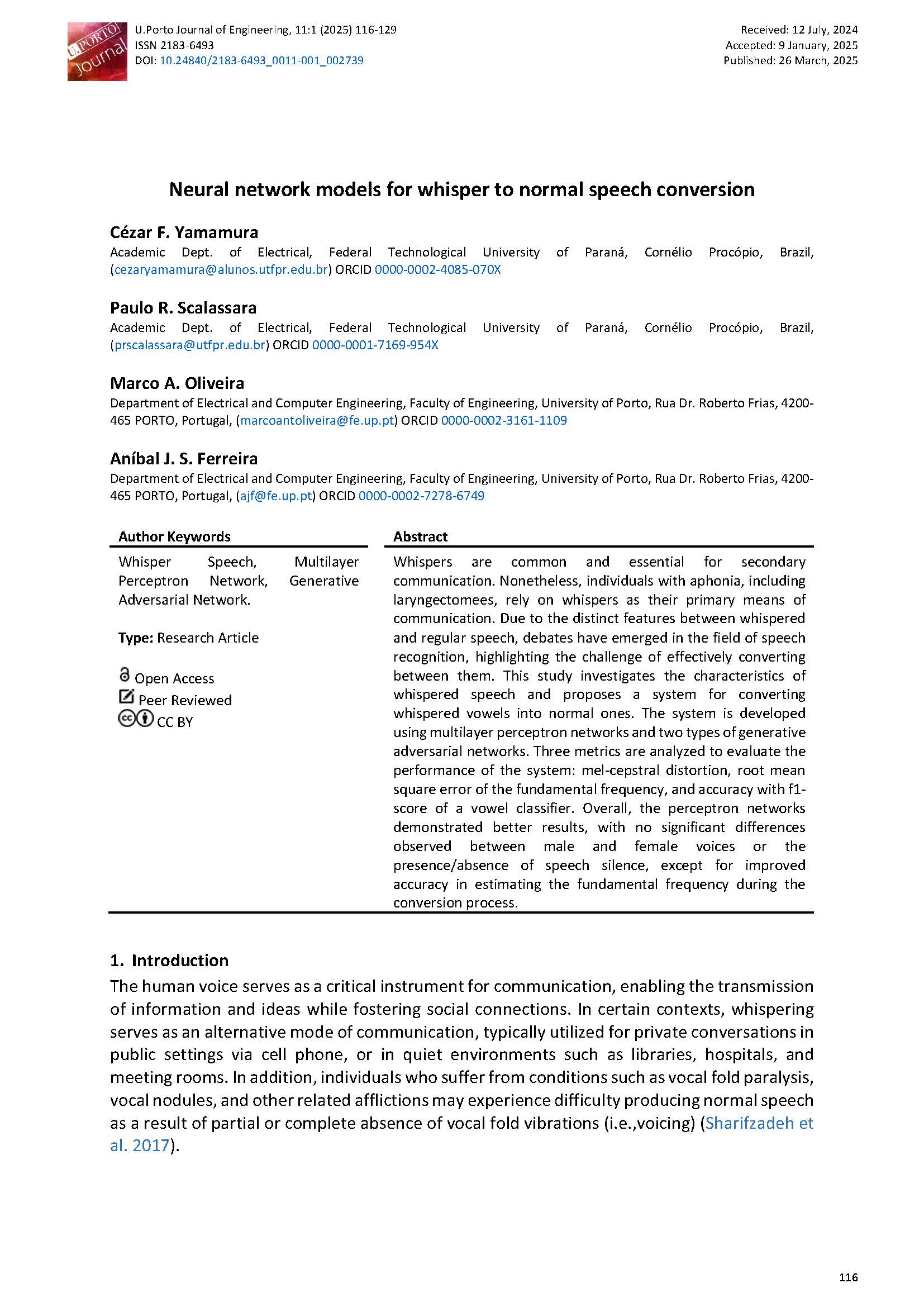Neural network models for whisper to normal speech conversion
Main Article Content
Abstract
Whispers are common and essential for secondary communication. Nonetheless, individuals with aphonia, including laryngectomees, rely on whispers as their primary means of communication. Due to the distinct features between whispered and regular speech, debates have emerged in the field of speech recognition, highlighting the challenge of effectively converting between them. This study investigates the characteristics of whispered speech and proposes a system for converting whispered vowels into normal ones. The system is developed using multilayer perceptron networks and two types of generative adversarial networks. Three metrics are analyzed to evaluate the performance of the system: mel-cepstral distortion, root mean square error of the fundamental frequency, and accuracy with f1-score of a vowel classifier. Overall, the perceptron networks demonstrated better results, with no significant differences observed between male and female voices or the presence/absence of speech silence, except for improved accuracy in estimating the fundamental frequency during the conversion process.
Downloads
Article Details

This work is licensed under a Creative Commons Attribution 4.0 International License.
Authors who publish with this journal agree to the following terms:
- Authors retain copyright and grant the journal right of first publication with the work simultaneously licensed under a Creative Commons Attribution License that allows others to share the work with an acknowledgement of the work's authorship and initial publication in this journal.
- Authors grant the journal the rights to provide the article in all forms and media so the article can be used on the latest technology even after publication and ensure its long-term preservation.
- Authors are able to enter into separate, additional contractual arrangements for the non-exclusive distribution of the journal's published version of the work (e.g., post it to an institutional repository or publish it in a book), with an acknowledgement of its initial publication in this journal.
- Authors are permitted and encouraged to post their work online (e.g., in institutional repositories or on their website) prior to and during the submission process, as it can lead to productive exchanges, as well as earlier and greater citation of published work (See The Effect of Open Access).

